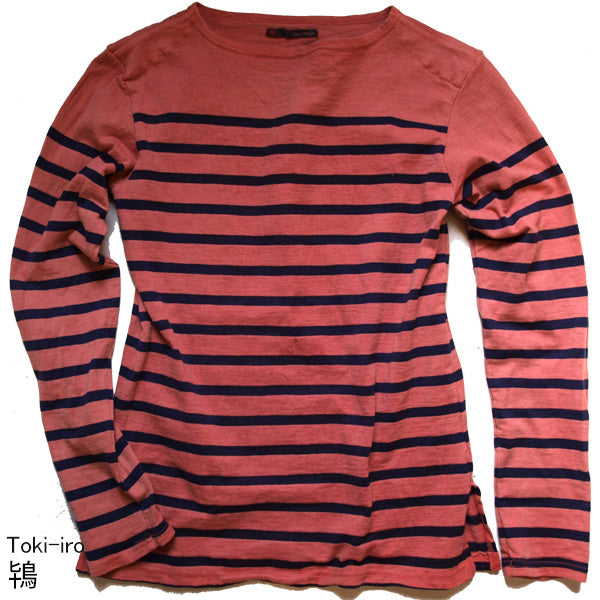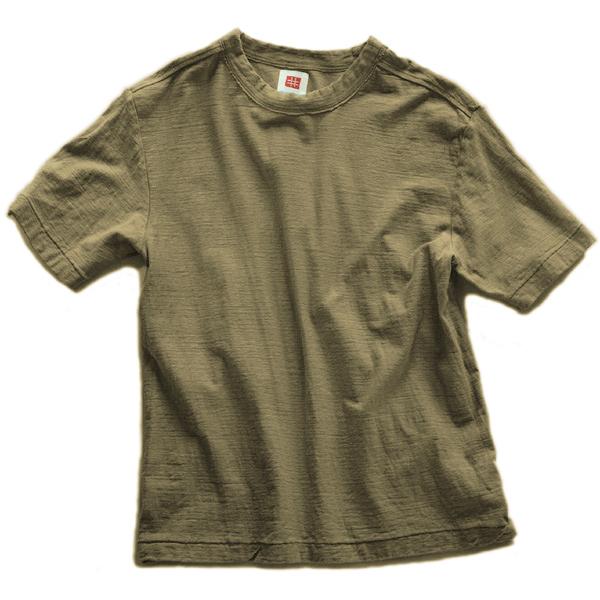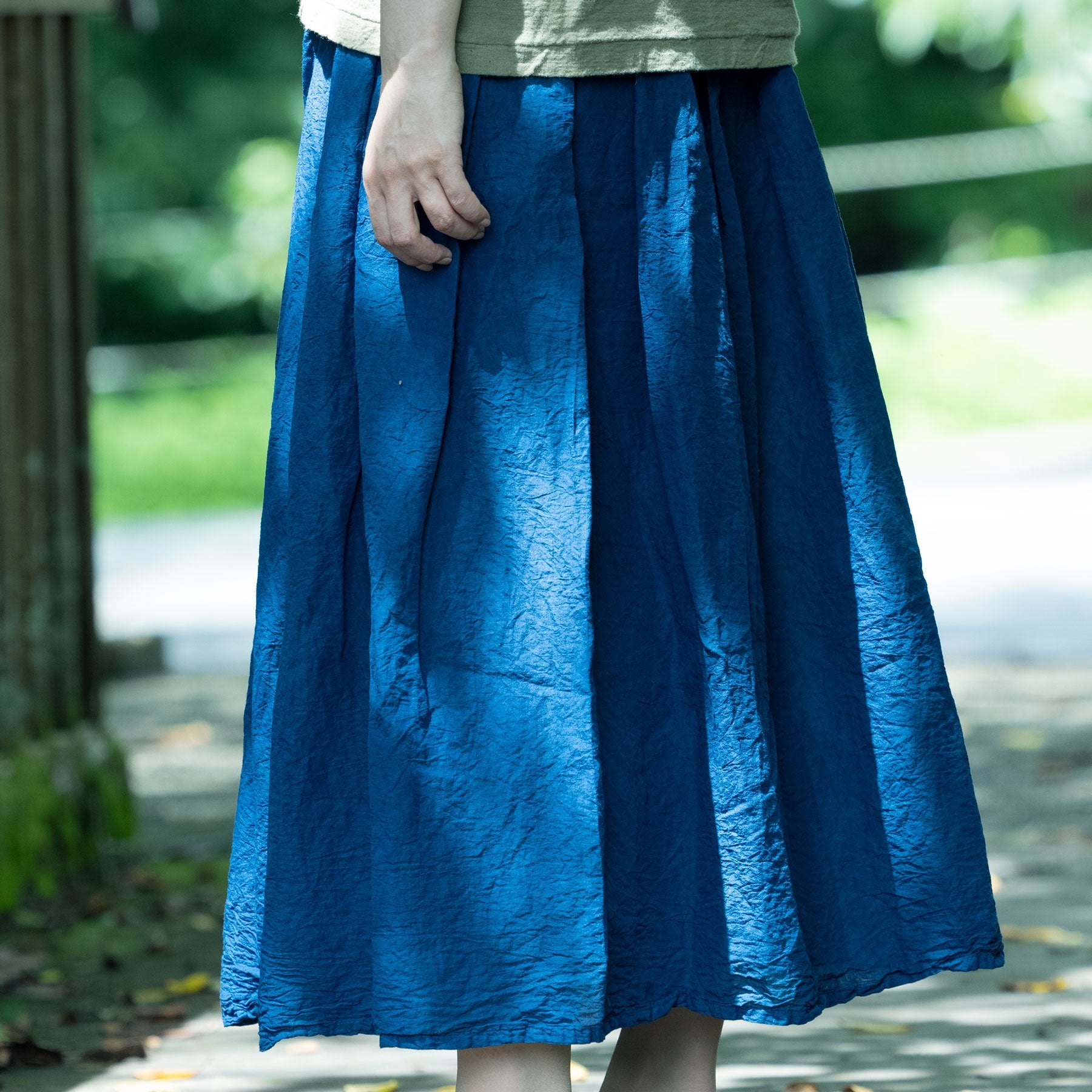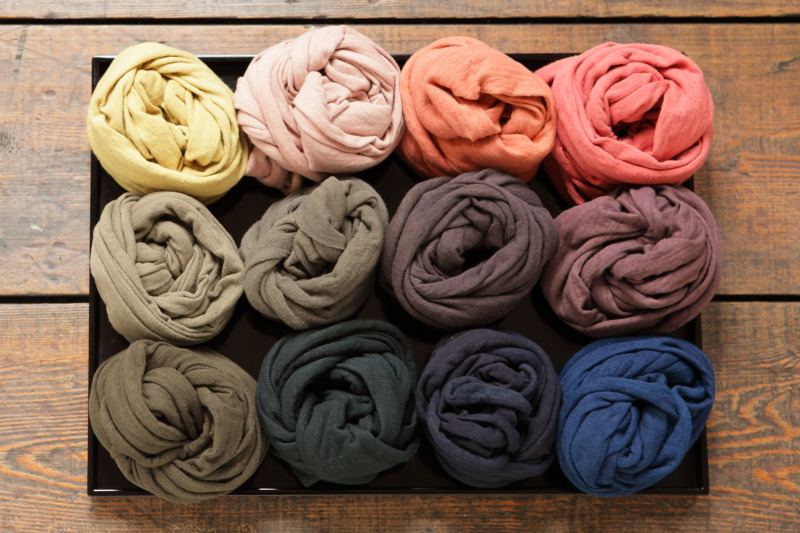
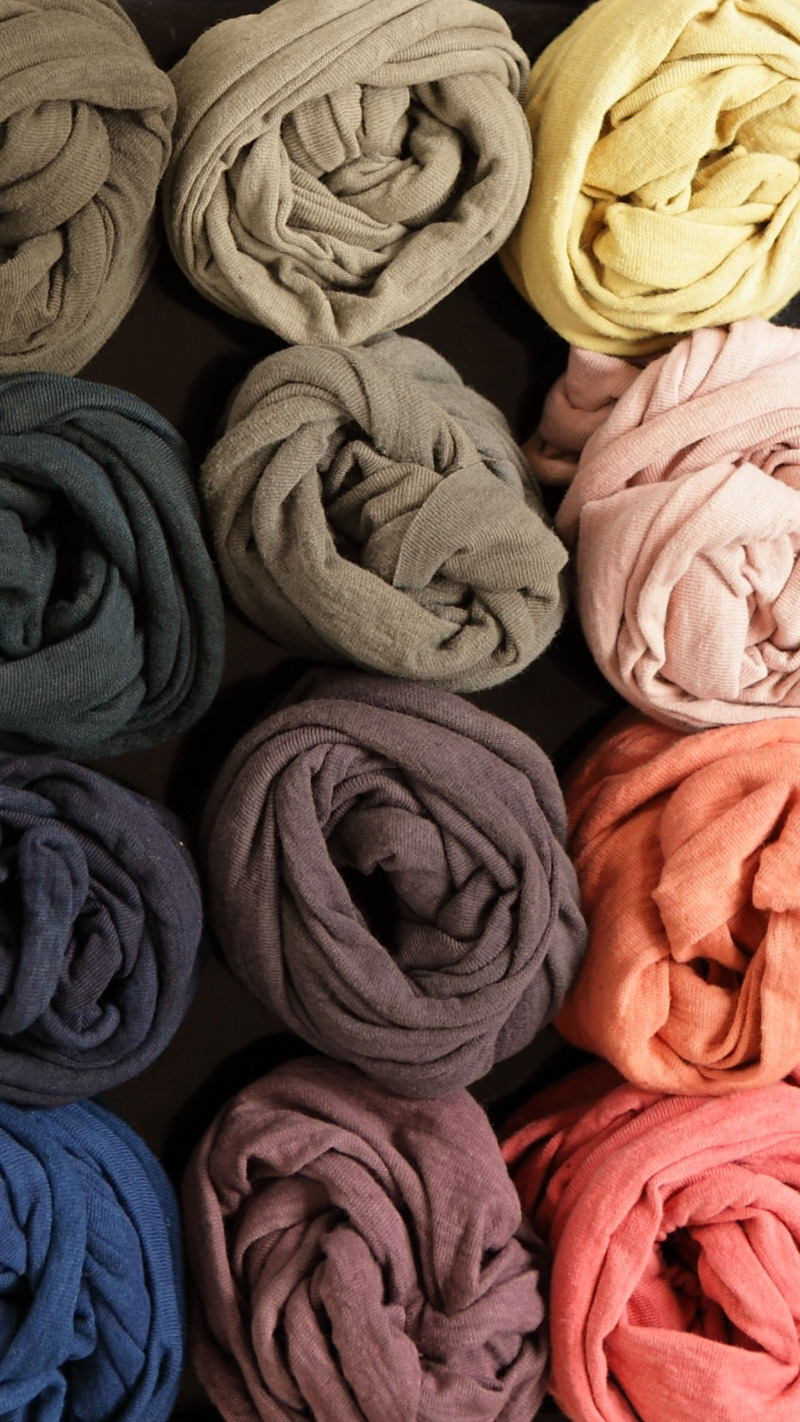
tezomeya’s colors created by plants and trees
tezomeya’s colors created by plants and trees
Complicated Warm Colors
Natural dyes are comprised of tree bark, wood, grass, roots, flower petals, and even insects. The colors are warm, sweet, and soft. These neutral colors from these dyes are completely different from primary colors. Let’s explore further…
Colors are extracted by boiling plants; the resulting dye is actually the plant producing matter. People of ancient times discovered this matter and used it to dye natural beautiful colors. Since then people began to harvest these plants and used various ways to extract dyes… natural dyeing was born.
Plants contain many varieties of pigments. A single plant contains many different pigments; therefore, the colors are very complicated. Complicated variations of these pigments culminate to make different colors.
The resulting colors derived from plants are very “comfortable” colors. During the process of making these colors, there are several adjustments (such as the amount of water, or temperature) and dye combinations we can make to achieve the colors we enjoy. At tezomeya we call these colors “Complicated Mute-Warm Colors”.
Color-pedia
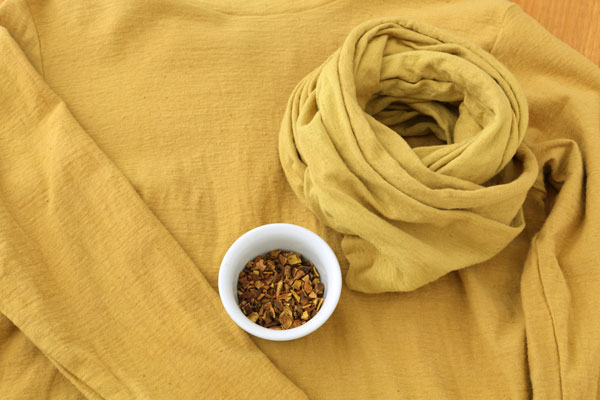
Kihada-iro
Kihada-iro [Pomegranate skin + Alum mordant] is derived from the Amur cork tree. In traditional dyes and its use in Japan dates back to the Nara period. However, for cotton the cork tree doesn’t fast very well. The color is made by boiling dried pomegranate skin, paired with alum mordant. The color isn’t a bright cheerful yellow, or quite a cold mustard yellow. It is a yellow you would see falling from a tree or written in a poem.
Online StoreRecommended
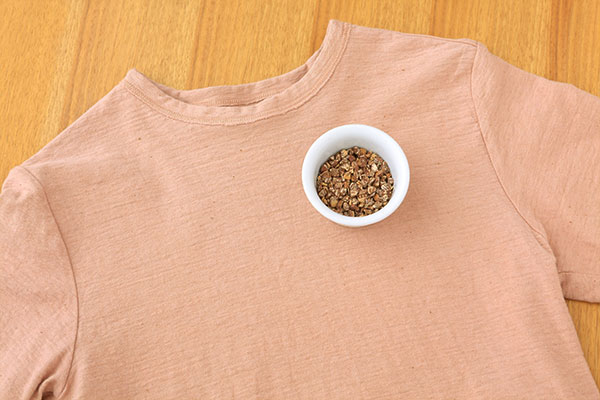
Haizakura-iro
Haizakura-iro [Areca palm tree nut + Alum mordant] is a dye that is made from the nut of the Areca palm tree. The ground nuts are boiled in water. This was an imported dye used in the Edo and Muromachi periods in Japan for black garment dyeing. In Asia, this nut was chewed with betel, and would turn the saliva red. The same red matter is what creates the pink tone in this color. At tezomeya, we use this dye with alum mordant to create this grey-pink color. This ash-cherry-blossom color compliments any woman of any color.
Online StoreRecommended
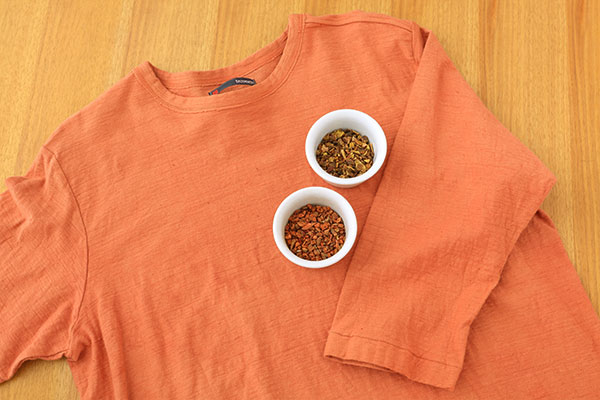
Ni-iro
Ni-iro [Pomegranate skin + Indian madder root + Alum mordant] is created by first dyeing yellow with dried pomegranate skins. Next is the red dye of the Indian madder root. Since ancient times the utilization of two different dyes were the method to create the variety of natural colors. The Chinese character for this color symbolizes red earth, and is the red color for mineral pigment painting. The combination of the mute yellow and charming red is this stoic orange color.
Online StoreRecommended
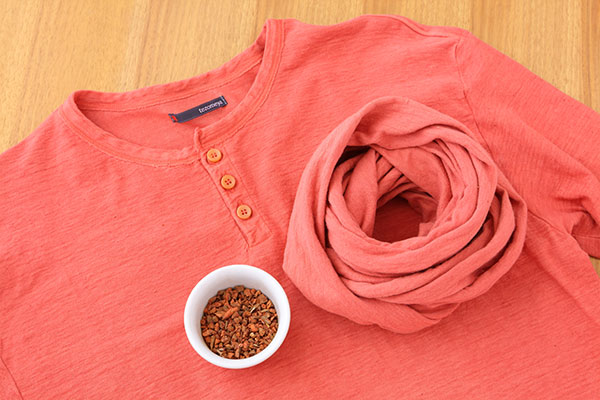
Toki-iro
Toki-iro [Indian madder root + Alum mordant] is the ancient red from the Indian madder root. We boil the madder root and use an alum mordant to make a deep red for silk, and a pastel red for cotton. There are only a few plants that can create a red color. However, unlike safflower and Sappanwood, madder is more permanent and reliable. The word “toki” comes from the Japanese word for the crested ibis, which has this enchanting red color quill.
Online StoreRecommended
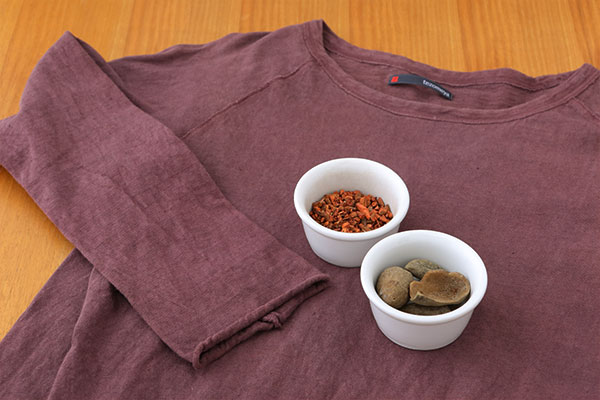
Ebizome-iro
Ebizome-iro [Insect gall + Indian madder root + Alum mordant + Wood vinegar mordant] is a mix of insect gall and madder root to create this lush ashy-wine red. This is another example of how the ancient Japanese used multiple dyestuffs to create a complicated color. When doing natural dyeing, we never mix two dyes together. We dye one color first and then the second. (We do this because if we mix the dyes, the color becomes very dull.) Ebizome is named after Ebikazura, a species of grape. This color has been used since the Asuka period (592AD-710) of Japan and was designated only for “special class”, which meant only the elite could wear this color. To create the somber tone requires careful attention during the insect gall dyeing process. Wood vinegar is used as a mordant.
Online StoreRecommended
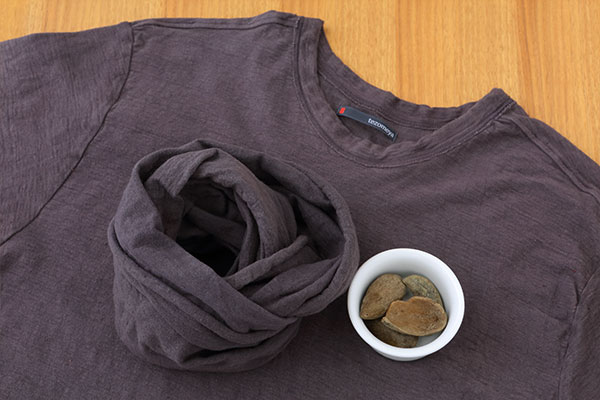
Fujinezu-iro
Fujinezu-iro [Insect gall + Wood vinegar mordant] is created by using insect galls and wood vinegar mordant. An insect gall is a growth on a plant created and controlled by an insect. In Edo period (1603AD-1867AD) Japan, it was not only used as a dyestuff but also as was fashionable in the day, for dyeing your teeth black. The wood vinegar mutes the color to this refined, “shibui” purple. This color was popular among commoners as a substitute to the other, more expensive purple dyes during Edo period.
Online StoreRecommended
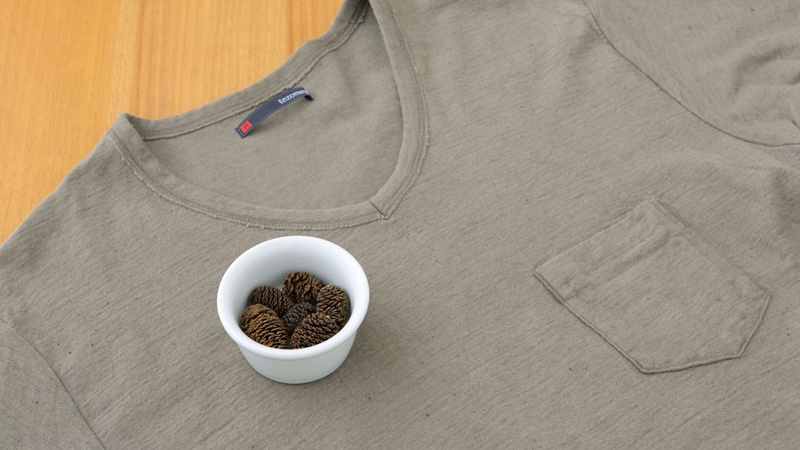
Nibi-iro
Nibi-iro [Green alder cones + Wood vinegar mordant] is made from green alder cones and a wood vinegar mordant. The color is a neutral grey, and in Japan, it was the customary color for mourning. If you refer to The Tale of Genji, you would see that the darker the Nibi-iro the deeper your relationship with the deceased. There are various shades of this color on Japanese (from thin to thick). The word nibi comes from the adjective nibui, which means “dull” (sword). Compared to western “grey” the color is more yellowish. Even though the process is simple, the resulting color is quite mysterious and complicated.
Online StoreRecommended
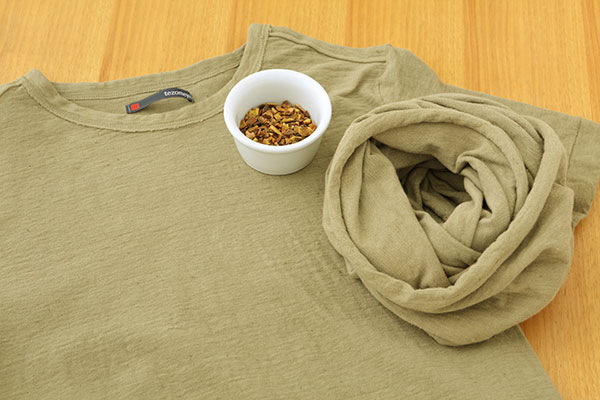
Oitake-iro
Oitake-iro [Pomegranate skin + Wood vinegar mordant] is made from a combination of wood vinegar mordant and dried pomegranate skins. Because of the pomegranate, if we change the mordant we can make several different colors. There are two ways to make green, one, mix yellow and blue. Or two, mix yellow and a little bit of black. For oitake-iro we dye it yellow first, and then add an iron mordant. The resulting color is an ashy tea-green. Translated into English this color means “wilting bamboo”, which certainly describes this subtle green.
Online StoreRecommended
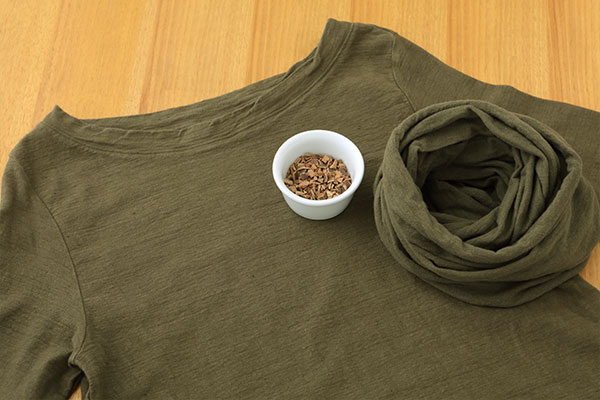
Miru-iro
Miru-iro [Bayberry tree bark + Wood vinegar mordant] is made from bayberry tree bark and wood vinegar mordant. Miru is a type of seaweed, and looks like a pine tree. The Chinese characters for this color are “ocean” and “pine”. Therefore, like the seaweed, the color is dark green. Since Heian period (794-1185A.D.), people have called this color “miru”. Since the 20th century, this type of color has been used for military uniforms. It is a very useful and casual color.
Online StoreRecommended
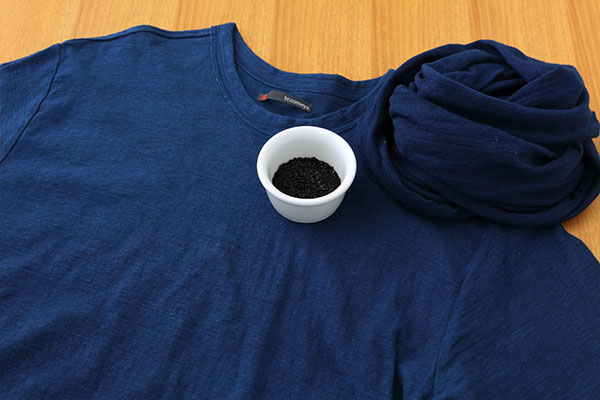
Hanada-iro
Hanada-iro [Indian indigo] is the blue of Japan. At our small workshop, we only have space for a hydrosulfate vat of India indigo. The color hananda was used to describe all blue colors dyed by indigo. There are many words to describe the various tones of this color. In Edo period, people began to call hanada-iro “ai-iro” (indigo-color), and soon the word hanada fell out of use. We aim for the darkest hue of hanada-iro.
Online StoreRecommended
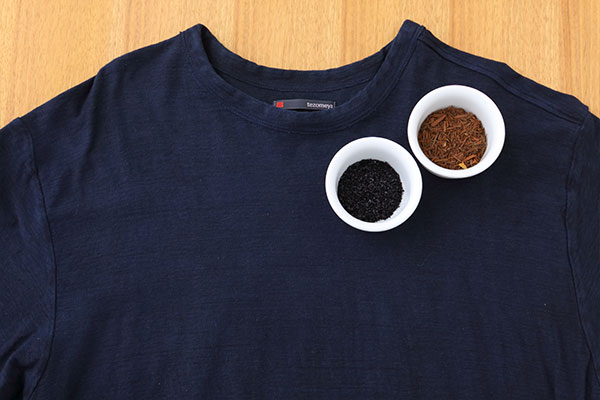
Tetsukon-iro
Tetsukon-iro [Indian indigo + Wood vinegar mordant] is India indigo dyed with logwood. Logwood is from central South America and was first introduced to Japan at the end of the Edo or early Meiji period. In the kimono industry, logwood was used for kurozome, which literally means “three times black”. So after only 3 times dyed you can get a black color, this somewhat hints at how difficult it was to dye a black color.
Online StoreRecommended
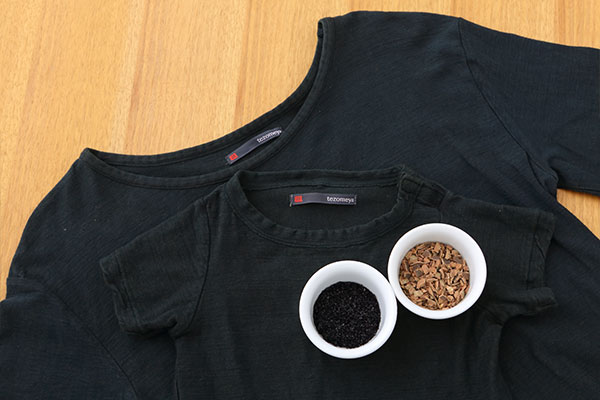
Kenboukuro-iro
Kenboukuro-iro [Indian indigo + Bayberry tree bark + Wood vinegar mordant] is first dyed with indigo. The second dye is bayberry tree bark and finally a wood vinegar mordant is added. These two colors together make this dark black. Natural black is made from charcoal, but this won’t fast and so it isn’t useful as a dye. Since ancient times dyeing black, there have been various sorts of dye mixes to get a dark color. This color was named after Kenbou Yoshioka, the inventor of this color. Kenbou Yoshioka was a sword-master, and inherited his families’ dyeing business. This greenish-black is one of the darkest colors we dye.
Online StoreRecommended
Care Instructions
All tezomeya products are all hand-dyed with natural dyes. Compared to synthetic dyes, natural dyes tend to fade more quickly. Please follow the instructions below so that you can enjoy tezomeya’s products for as long as possible.
To enjoy natural colors as long as possible …
How to treat cotton, linen, and Japanese paper products
- Washing
- – To preserve the texture and color of cotton, linen, and Japanese paper products it is highly recommended to wash with pure natural soap.
– Wash all garments inside out in a fine-mesh net. Please make sure detergent, or soap does not come into direct contact with the dyed material. Dissolve in water first.
– Do not use bleach. Some household detergents contain bleach please check before use.
– Keep natural dyed products out of direct sunlight. When drying outside please dry in a shaded area.
– Dark colors may transfer to lighter colors, please wash dark colors separately.
- Daily Use
- – Please be careful around acids, most of the dyes react to acid.
– It is possible some of the dyes will change color when they come in contact with iron, or copper while wet.
– Sweat stains can be removed by washing.
List of substances to avoid with natural dyed products
- Strong Alkali
- -Detergent comes into direct contact with a wet product
-Pure natural soap comes into contact with a wet product
-Strong cleansers and bleach
- Acid
- -Vinegar
-Citric Acid (lemons, etc.)
- Sunlight
- -Prolonged exposure to directed sunlight
- Iron and Copper
- -Wet fabric comes into contact with metal
However, color changes and fades. So, if the color changes to something you do not like, please contact us about our free re-dyeing service.












